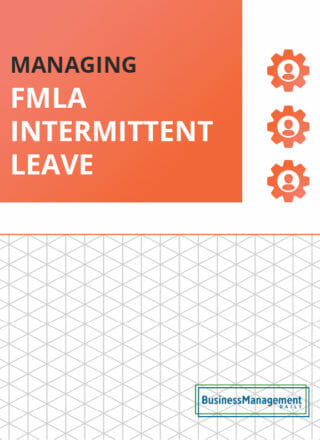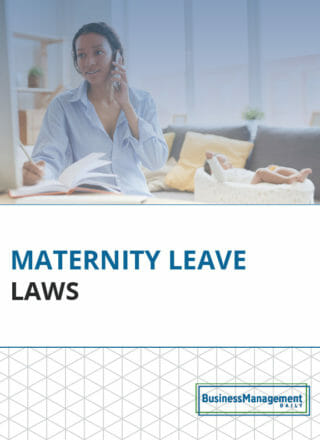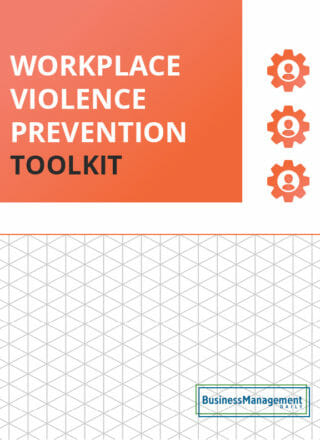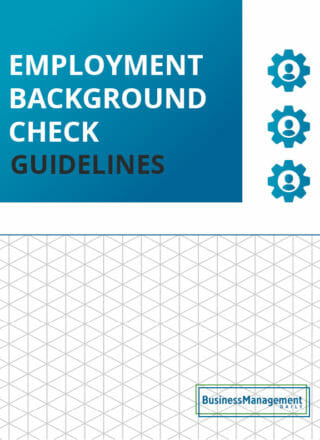The essential guide to FMLA certification
FMLA certification guidelines are absolutely essential for properly managing your workforce. When employees know they have to back up leave requests with appropriate medical information, FMLA leave abuse falls. While you don’t want to discourage appropriate leave – think containing a flu epidemic – encouraging calling-off-while-well isn’t a good strategy.
Plus, employers need to understand that there are different FMLA guidelines for different leave needs. For example, FMLA certification forms differ for taking time off for personal illness and taking military exigency leave. What you should ask for depends on the reason for leave. Here’s how to get the balance right so your workforce remains productive, well and happy.
FMLA basics
The Family and Medical Leave Act (FMLA) provides unpaid leave to covered workers who meet strict eligibility requirements. A covered employer is a:
- Private-sector employer, with 50 or more employees in 20 or more workweeks in the current or preceding calendar year, including a joint employer or successor in interest to a covered employer;
- Public agency, including a local, state, or Federal government agency, regardless of the number of employees it employs; or
- Public or private elementary or secondary school, regardless of the number of employees it employs.
An eligible employee is one who:
- Works for a covered employer;
- Has worked for the employer for at least 12 months – does not have to be continual;
- Has at least 1,250 hours of servicefor the employer during the 12 month period immediately preceding the leave; and
- Works at a location where the employer has at least 50 employees within 75 miles.
Leave is available for up to 12 weeks for:
- For the birth and care of the newborn child of an employee;
- For placement with the employee of a child for adoption or foster care;
- To care for an immediate family member (i.e., spouse, child, or parent) with a serious health condition;
- To take medical leave when the employee is unable to work because of a serious health condition; or
- Any qualifying exigency arising out of the fact that the employee’s spouse, son, daughter, or parent is a covered military member on “covered active duty.”
Leave is also available for up to 26 weeks to care for a covered servicemember with a serious injury or illness if the eligible employee is the servicemember’s spouse, son, daughter, parent, or next of kin (military caregiver leave).
FMLA forms for certifying leave
Covered employers are required to administer FMLA leave for eligible employees. That includes posting a general FMLA rights poster in the workplace. But your responsibility doesn’t end there. Once you realize an employee needs FMLA, you must follow very specific FMLA guidelines.
Employees are responsible for notifying their employer about the need for leave. They do not have to specifically invoke the FMLA. It’s enough that an employee provides sufficient information so that the employer realizes the employee may be eligible. That notification, whether formal or casual, triggers your FMLA responsibilities as follows:
- Provide the employee with a notice of FMLA eligibility. You have just five days to do this. The notice must specify either that the employee is eligible or not. If not eligible, you must explain why. You may notify orally or in writing. A written notice is best.
- Provide the employee with a second notice detailing the employee’s FMLA rights and responsibilities. This notice must be written. You can use your own form or the one DOL provides. The DOL form, found here is highly recommended.
- Also, within five days of the employee’s notice or request for leave, you must provide a written notice stating whether the time is being designated as FMLA leave. It must also clarify whether paid leave is being substituted for unpaid FMLA leave (i.e. that you’re running them concurrently). Include any fitness for duty on return information if your FMLA guidelines require it. Again, it’s best to use the DOL form.
When you have doubts about FMLA eligibility
Given how many forms of FMLA leave are available, it’s sometimes hard to decide whether you have the right information. That’s especially true when leave is for self-care or to care for a family member. That’s why it’s essential to get a certification from a health care provider that confirms a serious health condition exists.
DOL has standard FMLA certification forms for both circumstances. They’re available here and here. The care for a family member form includes questions for the employee. For example, it asks her to identify the person she will care for and the nature of the relationship. This helps you decide whether the employee is eligible for FMLA leave. It also asks what your employee will be doing to help. At the very least, these questions force employees to think through their plan. They’ll know their employer is scrutinizing the leave request.
Both forms require that a health care provider assess medical needs. The self-care FMLA certification also includes questions about whether the employee can perform the essential functions of the job. Include a current job description with the form for the doctor’s use.
Having FMLA guidelines that show you want to approve legitimate requests but won’t tolerate leave abuse discourages that abuse. Sometimes you may doubt the accuracy or authenticity of the FMLA certification form the employee returns. In that case, you have several options. The first is to cast doubt aside and approve the leave. The second is to contact the medical office that filled out the FMLA form and ask them to verify its accuracy. This can catch fraudulent submissions or alterations.
The third option is to request a second and third FMLA certification. If you take this route, you locate a health care provider you do not routinely use and have them complete a new FMLA certification. The cost is yours. If the first and second certifications don’t conflict, you must accept the result and grant leave. However, if they conflict, you can arrange for (and pay for) a third, final tie-breaking FMLA certification.
Special rules for FMLA and military leave
The FMLA military leave provisions were added in 2008 – partly in response to the wars in Afghanistan and Iraq. Long and repeated foreign deployments can create problems for those left behind. Injuries sustained while serving can mean your employees are called on to help during the recovery process. Congress felt one way to ease their burden was to extend protected but unpaid FMLA leave.
FMLA certification for military leave depends on what type the employee needs. The first kind, military exigency leave, is available for up to 12 unpaid weeks. It applies to employees with a spouse, son, daughter or parent in the Armed Forces serving a foreign deployment. The second kind is available for employees to care for a servicemember with a serious injury or illness. It provides up to 26 weeks off for a servicemember’s spouse, daughter, son, parent or next of kin to render care. It also includes leave when the servicemember is a veteran – which can happen when injury cuts short service.
Here’s how to handle FMLA certifications for military leave:
Military exigency leave: You may verify that your employee’s servicemember is on active duty or has been called up for foreign service. You may also ask about the exigent needs. Your employee may take leave for exigencies like:
- Making alternative childcare arrangements for a child of the deployer servicemember;
- Attending military ceremonies and briefings;
- Making financial or legal arrangements to address the servicemember’s absence;
- Attending counseling; and
- Taking up to 15 calendar days of leave during the servicemember’s Rest and Recuperation (R&R) leave during deployment.
Military caregiver leave: Your employee may care for an injured or sick servicemember or veteran for up to 26 weeks. The serious injury or illness must have happened in the line of duty on active duty. It must have caused the servicemember to be medically unfit to perform his or her military duties. It includes pre-existing injuries or illnesses if they were aggravated in the line of duty.
Employers can request an FMLA certification from either a military or civilian health care provider. But you must also accept a copy of a military Invitational Travel Order issued to your employee. These are essentially documents authorizing a family member’s travel to the injured servicemember. For example, your employee may have a travel order to go overseas where his wife (the servicemember) lies injured.
You are allowed to verify basic information, including asking for copies of military orders. You can also ask how your employee will care for the servicemember like you did for other family member care. DOL has also created an FMLA certification form for each type of military leave. You can find them here and here and here.
Warning: New FMLA certification forms may be coming
New FMLA certification and other FMLA related forms are coming soon. That’s despite the fact that DOL announced in August 2018 that all forms would remain valid until August 2021. Unfortunately, the DOL has not provided a target date. However, it did release proposed changes back in September 2019 and accepted comments through October 4, 2019. Forms up for revision include FMLA serious health condition certification, FMLA rights notice, FMLA leave designation and FMLA military leave. Some of the proposed changes to FMLA forms include:
- Instead of forms with space for comments, the new forms may have statements and check boxes. This may be a welcome change for medical providers that will speed up completing FMLA certifications. This may also alleviate problems with bad handwriting.
- Modifying the leave designation form to include information on concurrent paid leave.
- Changing the FMLA certification form to let medical providers more quickly determine whether an impairment is a serious health condition. The forms will walk physicians through FMLA guidelines rather than making employers rely on the doctor’s narrative. Those are now notoriously vague, frequently requiring clarification.
- The coming forms are also designed to better handle intermittent leave for chronic, long-term and permanent conditions. The intermittent FMLA leave certification form will likely include a template for determining the duration and frequency of absences. Medical providers will be asked to provide their “best estimate.” That may make managing FMLA guidelines on intermittent leave easier for employers.
- Finally, the proposed forms include a statement that some states prohibit disclosing a diagnosis. Health care providers in those states can then omit diagnosis. That means no more separate forms for different states.





